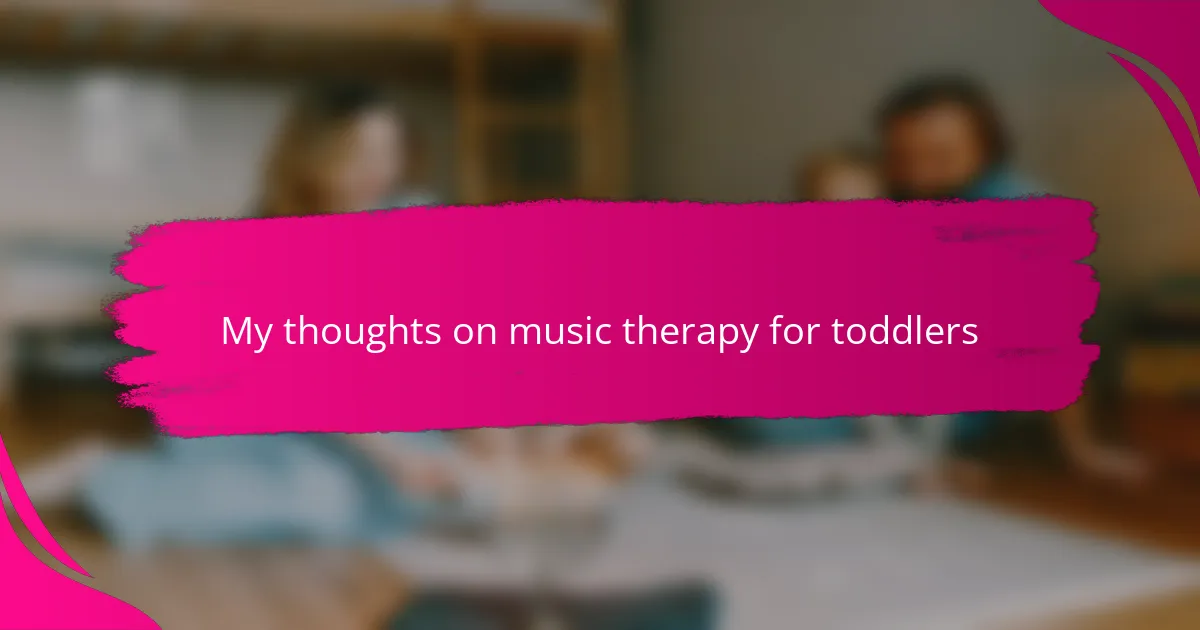Key takeaways
- Music therapy supports toddlers’ emotional, cognitive, and social development by using sound and rhythm to connect with them beyond words.
- Sessions enhance fine motor skills, language development, and social interactions through playful musical activities.
- Incorporating music into daily routines, like singing during snack time, fosters joyful connections and enriches everyday experiences.
- Observing subtle changes in toddlers, such as increased confidence and social engagement, highlights the powerful impact of music therapy on their growth.
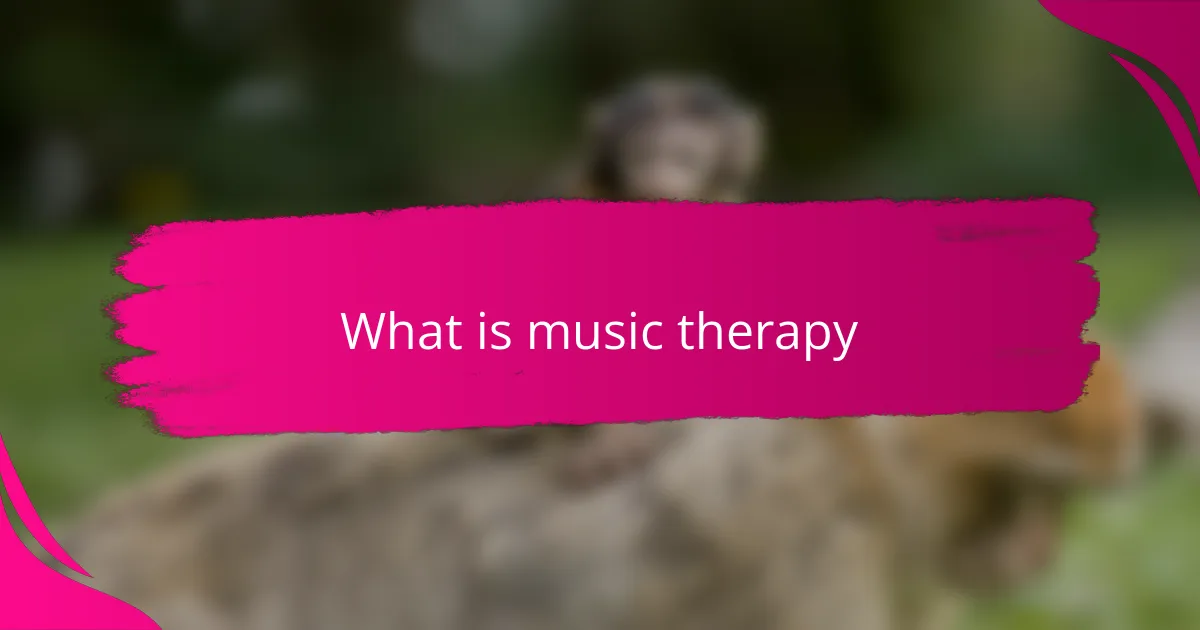
What is music therapy
Music therapy is a clinical approach where music is used to support a child’s emotional, cognitive, and social development. From my experience, it’s not just about playing songs—it’s about connecting with toddlers in a way that words alone often cannot.
Have you ever noticed how a simple lullaby can calm a fussy baby almost instantly? That’s the essence of music therapy—using sound and rhythm to reach deeper parts of a child’s mind and heart. It’s fascinating how something so natural can become such a powerful tool.
What makes music therapy unique is its goal to nurture growth and healing through interactive musical experiences. I’ve seen toddlers respond with smiles or calm breathing, moments that feel like tiny breakthroughs. It makes me wonder how many more children could benefit from this gentle, creative form of support.
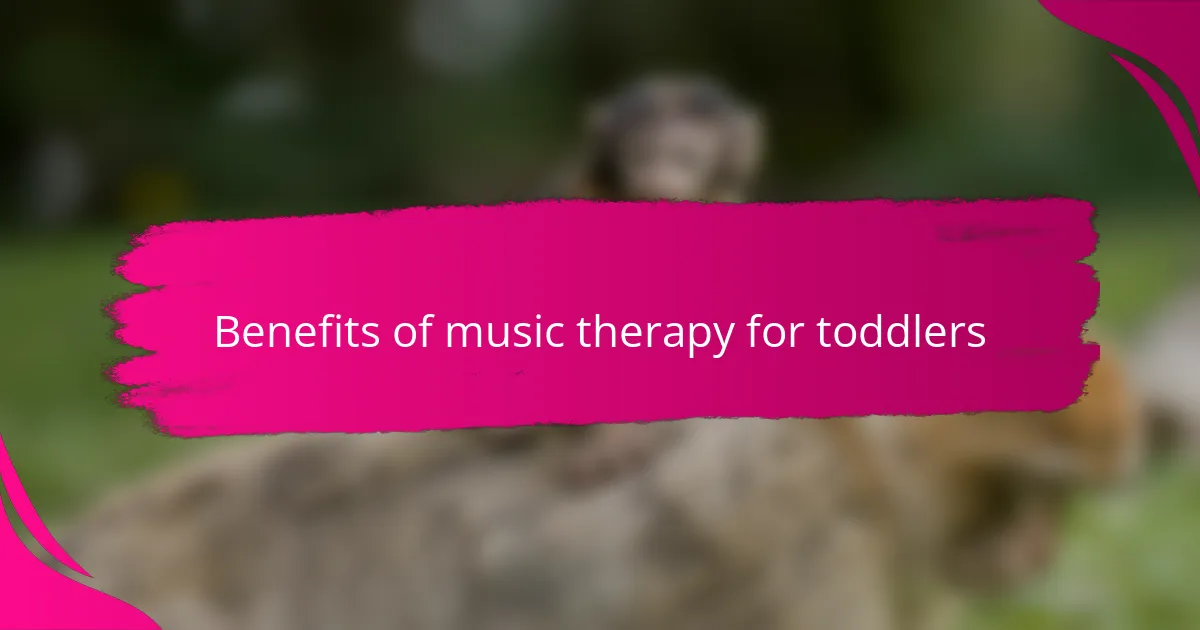
Benefits of music therapy for toddlers
There’s something truly magical about watching a toddler light up when they drum on a little drum or shake a rattle during music therapy. From what I’ve seen, these moments do more than just entertain—they build fine motor skills and coordination, setting a foundation for future learning. Isn’t it amazing how play and development come together so effortlessly through music?
I’ve noticed that music therapy also offers toddlers a safe way to express feelings they can’t yet put into words. When a child hums a tune or moves rhythmically, it’s like they’re communicating on their own special frequency. It makes me think about how powerful sound is in helping little ones process emotions before they even speak.
Social skills bloom in these sessions too. Sharing instruments or singing simple songs with others encourages turn-taking and cooperation—skills every parent hopes their child will master early on. I’ve found it’s often through these joyful musical exchanges that toddlers begin to connect with peers in meaningful ways.

How music therapy supports toddler development
Music therapy gently scaffolds toddlers’ language skills by encouraging them to mimic sounds, rhythms, and simple words in songs. I remember a little one who started babbling more clearly after just a few weeks of singing familiar tunes together—it was like music opened a new pathway for communication. Don’t you think it’s incredible how melodies can become a toddler’s first words?
Beyond language, music therapy also shapes cognitive development by fostering memory and attention. When toddlers learn to anticipate a refrain or follow beat patterns, they’re actually strengthening brain connections that support problem-solving and focus. It reminds me how something as joyful as clapping to a rhythm can quietly prepare a child for school readiness.
Emotionally, music provides toddlers with a safe outlet to explore feelings they don’t yet understand or express verbally. I’ve witnessed shy toddlers transform during sessions, their faces lighting up as they drum or sway, releasing anxiety and discovering joy. Have you noticed how a simple song can sometimes say what no words can?
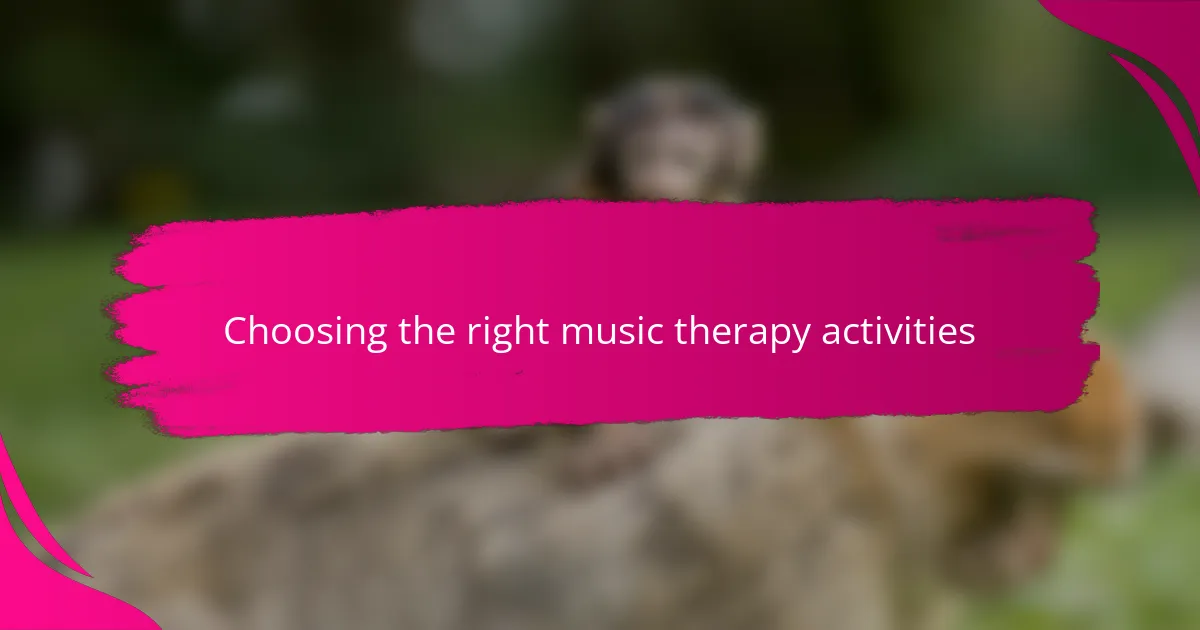
Choosing the right music therapy activities
Choosing the right music therapy activities often means tuning into what truly resonates with your toddler. I’ve found that simple, repetitive songs with clear rhythms tend to capture their attention best—there’s something comforting in predictability for little ones. Have you ever noticed how your child perks up with a familiar tune? That’s a great sign you’re on the right track.
It’s also important to consider activities that encourage participation, like playing with shakers or tapping on a drum. I recall a session where a toddler who was usually shy suddenly burst with excitement when given a small tambourine to shake—it was like the instrument unlocked a new confidence. Including interactive elements can transform the experience from passive listening to active engagement.
Lastly, variety matters, but it should match your child’s mood and energy level. Sometimes a quiet lullaby works wonders, while at other moments, a lively clapping game can bring out joyful bursts of movement. I often ask myself, “What does my toddler need right now—a calming moment or a playful boost?” Adjusting activities accordingly keeps the therapy meaningful and enjoyable.
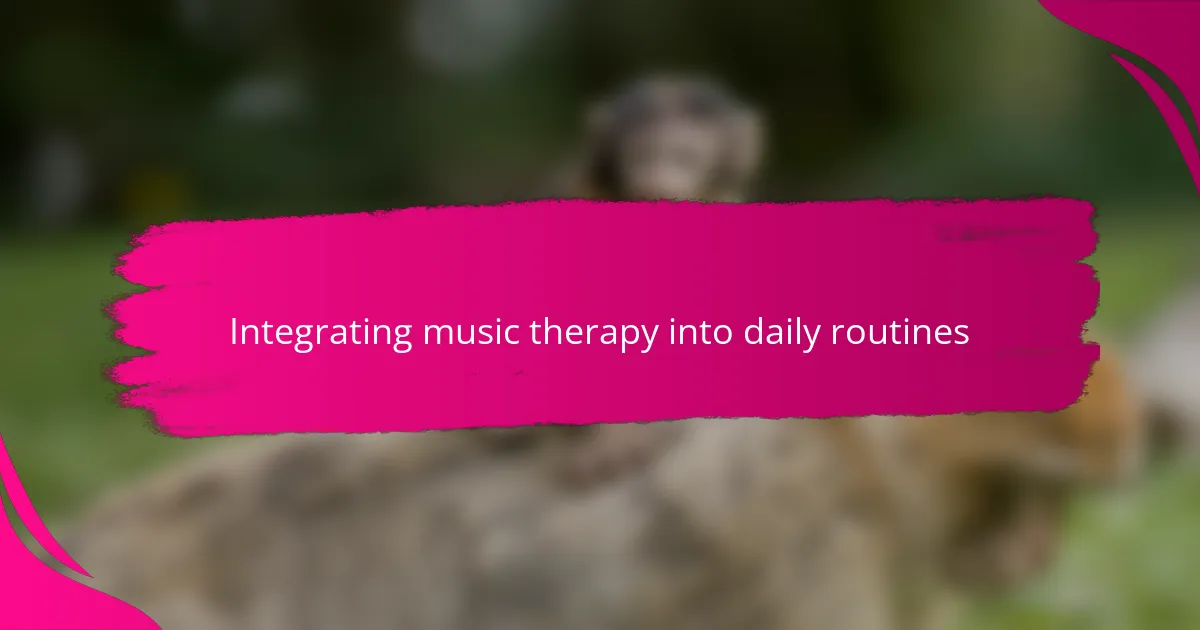
Integrating music therapy into daily routines
Integrating music therapy into daily routines doesn’t have to feel like a big production. I often found that simply weaving a few minutes of singing or instrument play into usual activities—like diaper changes or snack time—made those moments feel more joyful and connected. Have you tried turning everyday tasks into mini musical sessions? It’s amazing how much easier they become.
I’ve learned that consistency is key, but flexibility matters just as much. Some days, a calming lullaby helps ease my toddler into bedtime, while other times, we need an energetic dance around the living room to shake off excess energy. How do you decide when to switch gears? Listening closely to your child’s mood becomes a kind of shared musical language that strengthens your bond.
Even small gestures, like humming a favorite tune during a walk or tapping rhythms on the kitchen table, can add layers of music therapy to daily life without disrupting your schedule. It’s these spontaneous moments where I’ve noticed real growth—where music naturally invites my toddler to explore, imitate, and express. Doesn’t that make you wonder about the untapped potential in your everyday interactions?
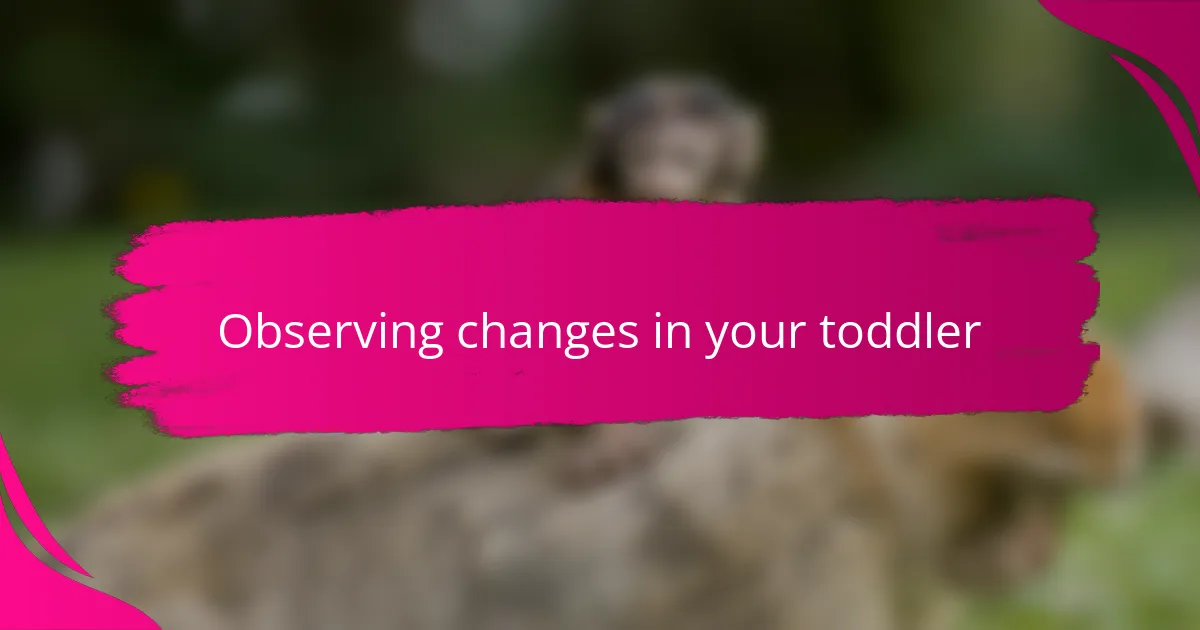
Observing changes in your toddler
Sometimes, the changes in your toddler feel so subtle, you almost miss them. I remember noticing my child’s calmer breathing and steadier gaze after a few music therapy sessions—it was as if the music gently soothed his busy little mind. Have you ever caught yourself smiling at such small, yet meaningful shifts in your child’s demeanor?
It’s fascinating how toddlers begin to show new social sparks, too. I’ve watched my shy toddler reach out to share a rattle during a music activity, a tiny but powerful step toward connection. When you see these moments, don’t they remind you of how music can open doors that words alone might keep closed?
Then there are the joyful bursts of creativity and movement that often come unexpectedly. One day, my little one suddenly started clapping along with a song, arms raised in sheer delight—an unspoken celebration of growing confidence. Have you witnessed your toddler’s face light up like that, as if music speaks directly to their soul?
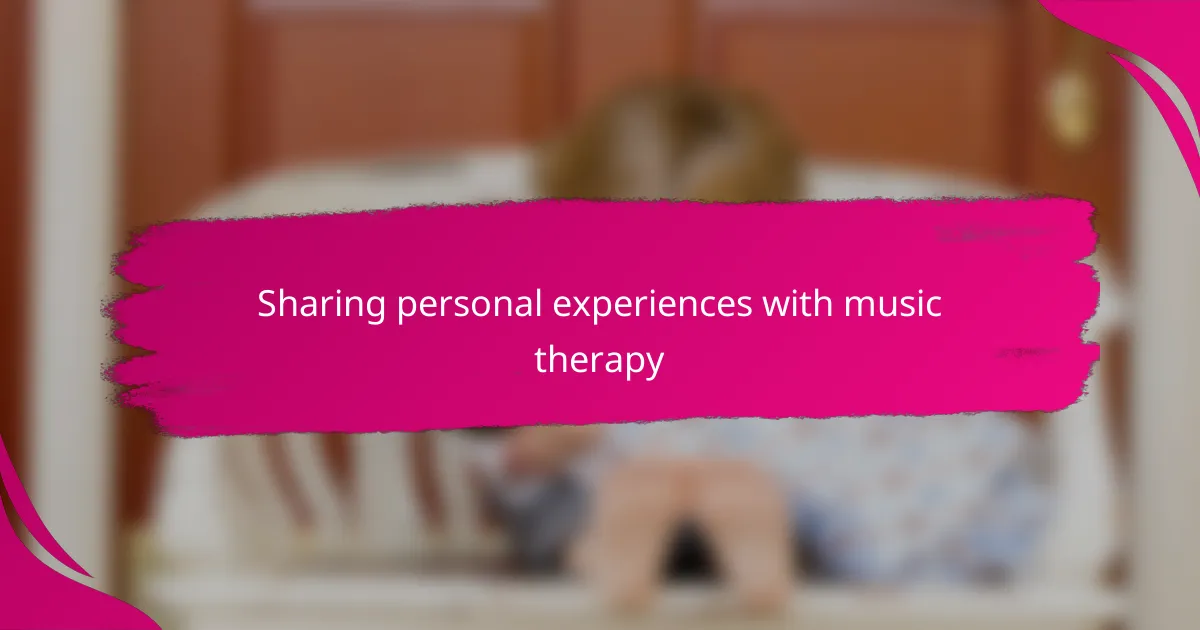
Sharing personal experiences with music therapy
When I first introduced music therapy to my toddler, I was struck by how quickly he responded to just the sound of a gentle melody. One afternoon, as we sang familiar nursery rhymes together, his whole face lit up with pure joy—it felt like we’d discovered a secret language between us. Have you ever experienced that moment when music suddenly bridges a gap you didn’t realize was there?
There was also a time when my usually reserved child surprised me by confidently banging on a drum during a session. That simple act showed me how music therapy can unlock hidden parts of a toddler’s personality, encouraging expression in ways words can’t. It made me wonder how many other parents have witnessed their little ones open up through rhythm and song.
I’ve noticed that these shared musical moments often create a special bond between us. Singing and moving together not only calms my toddler but also invites a connection that feels both playful and profound. Don’t you think those small, music-filled interactions are some of the most meaningful parts of parenting?
